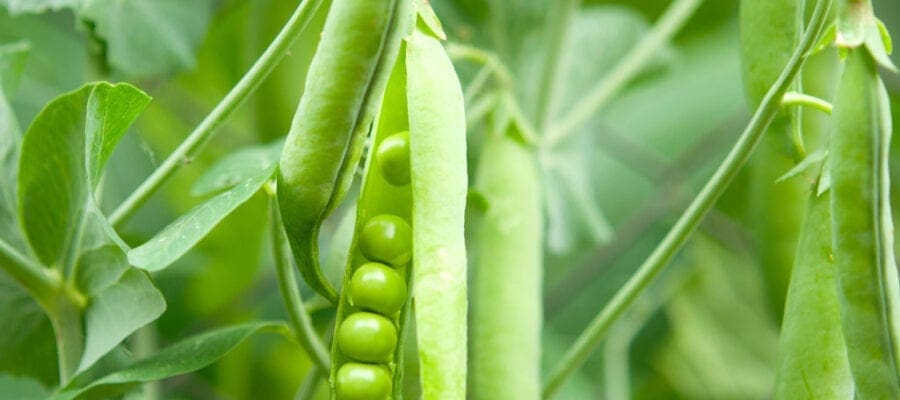This has to be one of the favourite veg of all time; even children manage to eat a few peas when they may turn their nose up at other vegetables. And peas are packed with nutrients and goodness especially when picked straight from the garden.
Home-grown also have a superior taste that has to be experienced to be believed. They are not only good for us but also good for other plants and the soil.
Peas are member of the legume family and they have nodules on their roots that contain special bacteria that extract nitrogen from the air and store in these nodules for use by the plant. The bacteria get sugars from the plant for its efforts.
After the crop has finished it is worthwhile to cut off and compost the tops but leave the roots in the ground and dig into the soil.
Varieties
- ‘Feltham First’
A popular variety that is particularly good for sowing very early or late in the season. Doesn’t need too much supporting. - ‘Early Onward’
A very heavy cropping variety that is also good for early sowings. - ‘Alderman’
A late maincrop variety that grows to about 1.5m (5ft) high so support is needed. - ‘Greenshaft’
Bred from the popular variety but said to be even sweeter.

Sowing & Growing Peas
Peas can be sown direct into the plot from March. Sow seeds about 5cm (2in) apart in a double or triple row and to a depth of 4cm (11⁄2in).
However, these outdoor sowings are sometimes taken by birds and mice so cover the seeds with some netting or alternatively sow under cover in pots or trays in a cold frame or greenhouse. Another method is sowing into a piece of guttering filled with compost.
Once the seedlings are through, the compost can be gently pushed out of the guttering straight into a prepared shallow trench.
Growing on peas
Some pea varieties are short while other, often older, varieties will grow up to 1.5m (5ft) or more. All have quite spindly stems so will benefit from some support.
The dwarf ones can be supported using twigs stuck in the ground among the crop. Taller varieties will require netting.
Twine stems around the supports if necessary to begin with. Once the crop starts to flower make sure the plants are well watered and also as the pods form.
Scrumptious recipes for your homegrown peas
More on peas
More grow guides
For more growing tips and guides, you should subscribe to Kitchen Garden – you’ll receive free seeds with every single issue too!











